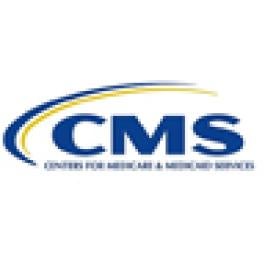Continuing our blog series on CMS’s massive proposed rule for the implementation of the Medicare Access and CHIP Reauthorization Act of 2015 (MACRA), we dedicate this post to examining the Advance Payment Model (APM) provisions of the proposed rule. As our colleagues discussed on May 3rd, the proposed rule contains two key initiatives: Merit-Based Incentive Payment Systems (MIPS) and Alternative Payment Models (APMs).
Under MACRA’s APM provisions, clinicians must satisfy the requirements of “Qualifying APM Participants” (QPs) by participating in an Advanced APM to be eligible for certain benefits, including:
-
For payment years 2019 to 2024, a lump sum payment equal to 5 percent of the estimated aggregate payment amounts for Medicare Part B covered professional services for the prior year;
-
Exclusion from MIPS; and
-
For payment years 2026 and later, payment rates under the Medicare physician fee schedule for services furnished by the eligible clinician will be updated by the 0.75 percent qualifying APM conversion factor.
Not all clinicians can qualify as QPs and be eligible for the bonus incentives and subsequent APM conversion factor. CMS indicates that these incentives are designed to be challenging and involve “rigorous care improvement activities.”
To understand the requirements to qualify as a QP, it is helpful to understand the definitions of APMs, Advance APMs, and QPs. This blog focuses on detangling these definitions to understand APM incentive payments in the proposed rule.
Defining APMs, Advanced APMs, and QPs
APMs
To qualify as a QP, a clinician must first participate in an APM, which means any of the following: (1) a model under section 1115A of the Act (other than a health care innovation award); (2) the shared savings accountable care organization program under section 1899 of the Act; (3) a demonstration under section 1866C of the Act; or (4) a demonstration required by Federal law. Participation in an APM alone does not qualify a clinician for an APM incentive payment, which would then exempt the clinician from MIPS. Rather, clinician must first participate in an Advanced APM.
Advance APMs
CMS proposes two types of Advanced APMs: Advanced APMs and Other Payer Advanced APMs. APMs seeking to qualify under either of these types must meet the following requirements:
-
The use of certified EHRs;
-
Payment for covered professional services based on quality measures comparable to those found in MIPS; and
-
Either (a) the Advanced APM Entity to bear financial risk for monetary losses that are in excess of a nominal amount or (b) is a nationally recognized accredited patient-centered medical home, expanded under section 1115A(c) of the Act.
As the name suggests, an Other Payer Advanced APM allows eligible clinicians to participate in an APM through other payers, such as a commercial plans or a state Medicaid program offering an APM.
Stakeholders have been anxious about the third requirement because accountable care organizations (ACOs) vary in the amount of risk that they bear. If the APM risk arrangement meets the proposed financial risk standard, CMS would then consider whether the amount of the risk is in excess of a nominal amount. An APM takes on more than a nominal amount of risk if it meets certain thresholds tied to its actual and expected expenditures.
CMS proposes a slightly different approach for clinicians participating in medical homes, which have little, if any, experience with financial risk.
QPs
For clinicians providing services within an Advance APM to be considered a QP and qualify for the incentive payment, he or she must be part of an Advanced APM, which meets or exceeds the payment amount or patient count thresholds. Clinicians must participate in an Advanced APM for at least one year to become a QP.
Practitioners that do not qualify as QPs may qualify as Partial QPs by meeting slightly lower payment amount or patient count thresholds. Partial QPs are not eligible for the 5 percent APM incentive payment or the APM conversion factor. However, they could decide whether or not to be subject to the MIPS payment adjustment (which could be positive or negative).
Comments
As the foregoing summary makes clear, MACRA and the proposed rule make it quite difficult to become a QP and earn the right to receive incentive payments. Indeed, it is our understanding from several physician specialty societies that many specialists will not qualify, meaning they will need to seek (or suffer) payments adjustments under MIPS. As we noted in our first blog on the proposed rule, the proposed rule is extensive, subject to change, with deadlines likely extended. Nevertheless, the proposed rule gives a clear road map of Congress and CMS’s expectations for physicians to thrive under this new payment model that moves away from fee-for-service payments based on volume toward an incentive system that rewards the provision of higher quality and value service with a greater patient-centered focus.





 i
i

